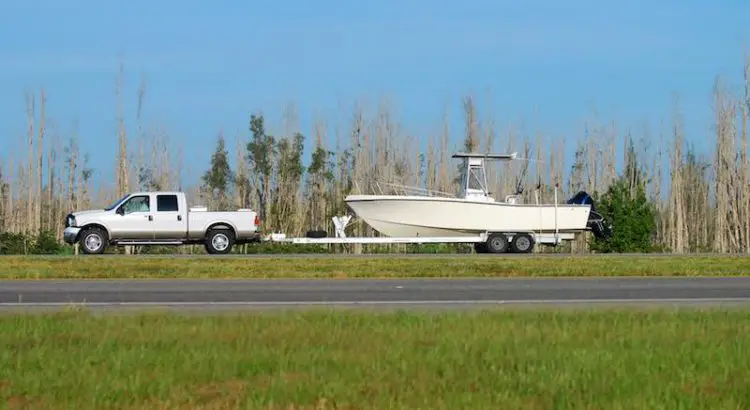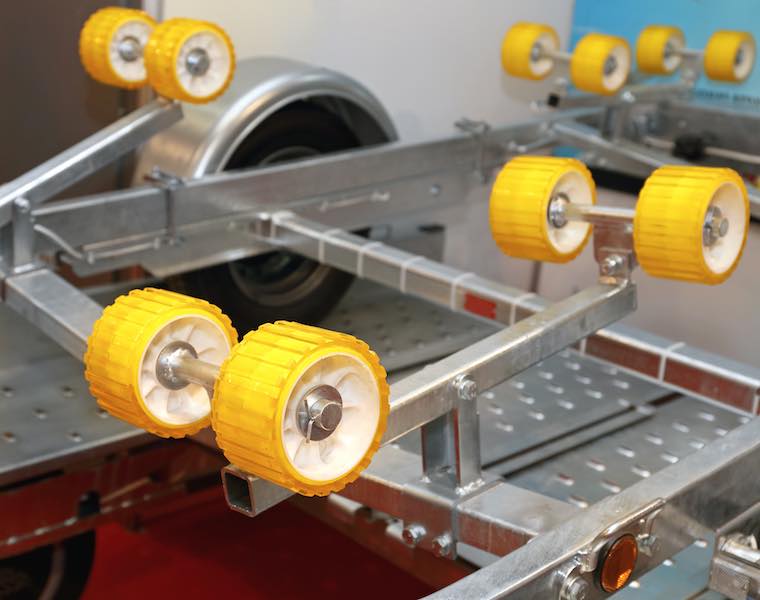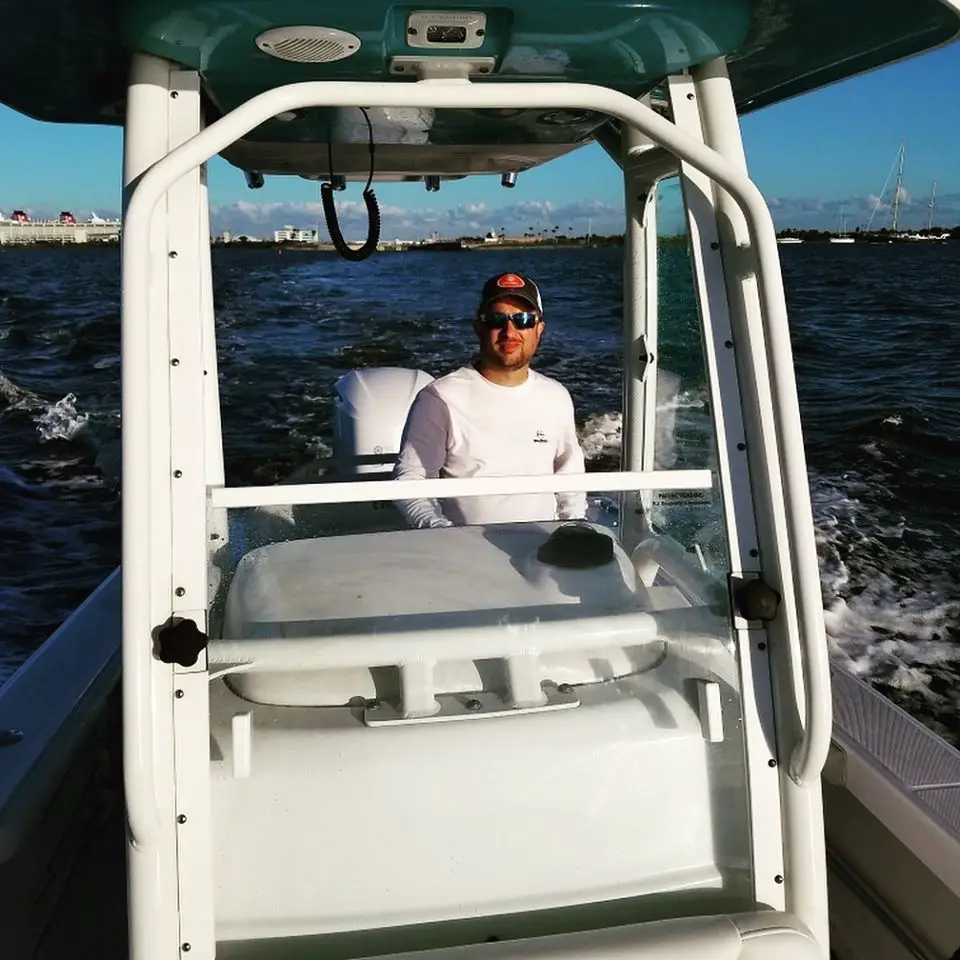This page contains affiliate links. This means that we may get a small commission for recommending products, if you choose to click on something and buy it. This does not cost you anything, but we wanted to be honest and let you know!
(Last Updated On: )According to Wikipedia, a boat trailer is designed to launch, retrieve, carry, and sometimes store boats.
Now that we know the basic definition, let’s talk more in-depth about the trailer that might hold our boating investment.
While there are over 11.9 million registered boat owners in the United States, not all of those who own a boat have the good fortune to live on the water too.
That means that our favorite pastime vehicle has to be towed to the water, and most owners of small boats do just that.
If you have never had a boat trailer before, just where do you start on your search?
We have constructed the anatomy of a boat trailer so that you will be able to make an educated decision before purchasing.
Table of Contents
The Frame
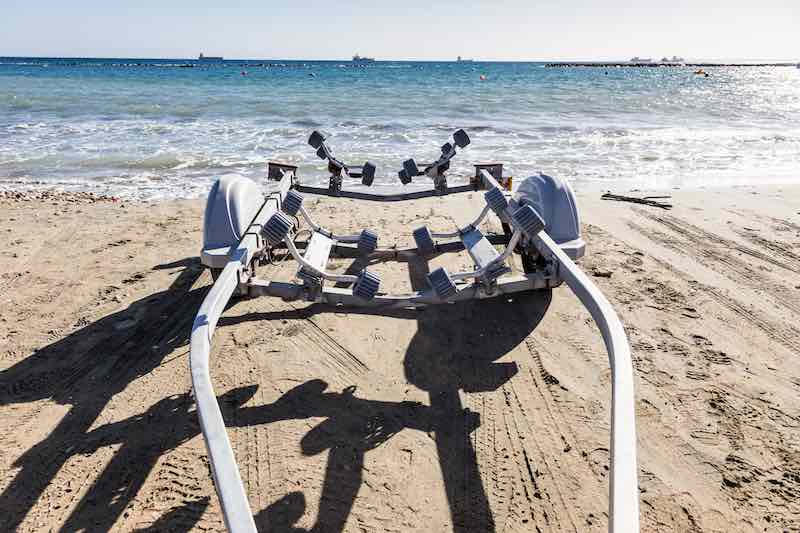
A boat trailer frame is usually made from steel or aluminum and gives the trailer its structural integrity.
While tubular steel has excellent strength and can be painted to match your boat, the downside is that steel can rust.
If you choose a steel trailer, be prepared to do periodic maintenance to keep the rust at bay.
A galvanized trailer will be better at corrosion resistance and is a must if you boat primarily in saltwater.
Galvanization is the process of metal being dipped into liquid zinc. The metal then comes out with a protective silver colored coating, but it does not accept paint.
An aluminum trailer made from I-beams has a better strength-to-weight ratio when it is compared to steel.
The downside is that it offers less protection for wiring and brake lines than tubular steel does.
If you choose an aluminum, it would be wise to run the wiring and brake lines through a conduit and secure the pipe to the inside of the frame for protection.
The Size
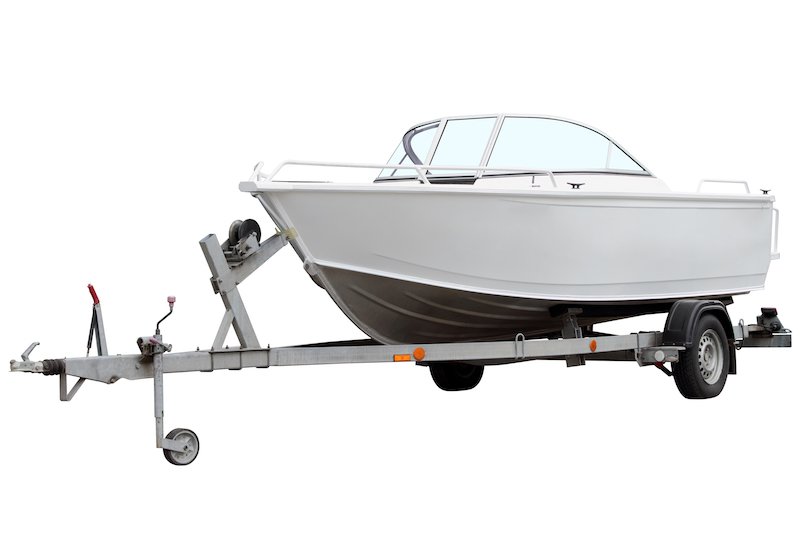
It seems like a no-brainer, but your boat should fit the trailer. Trailerable boats, those under 8’6″ in the beam, look at two measurements: length and weight.
To get the length of the boat, measured from the farthest point on the bow to the end of the hull’s running surface. (the hull is the body of the boat that rides in the water)
When measuring, don’t use an overall length, as that might be influenced by extended swim platforms, as the trailer will support the hull’s running surface only.
The rule of thumb is that a trailer should be about two feet longer than the boat.
Look at the manufacturer’s spec sheets to get the weight of your boat, but take other items into account.
Add on the weight of fuel (about 7.1 pounds per gallon) water (about 8.1 pounds per gallon) and batteries, gear, and any other items aboard.
If the total is under 3,500 pounds, a single axle trailer would be able to handle the weight; if the total weight is over 3,500, then you are better off getting a tandem axle trailer.
The Towing Capacity
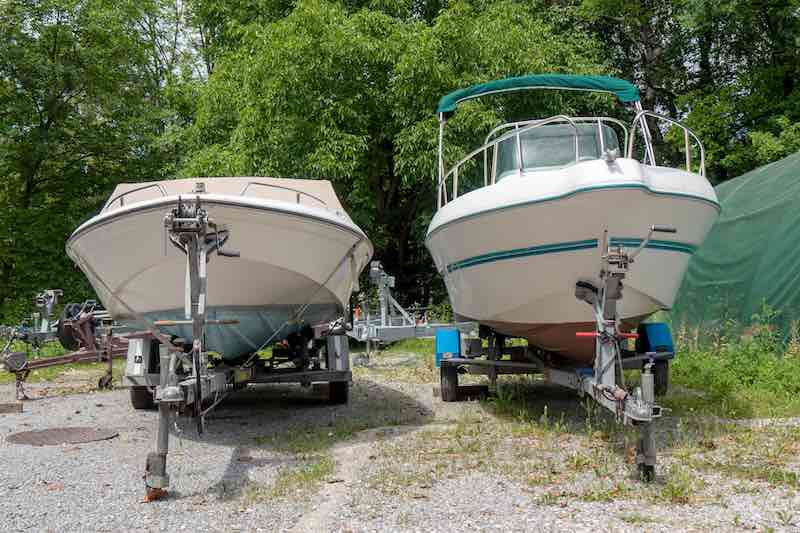
All trailers should have a plate that shows the weight that the trailer is designed to carry. It will look like the one below.
It lists the maximum capacity (4000 lbs) The GVWR (5100 lbs) stands for Gross Vehicle Weight Rating, the GAWR (2550 lbs) Gross Axle Weight Rating for a given tire size and inflation pressure.
If your trailer has one axle, the GAWR and the GVWR will be the same. If you have more than one axle, multiply the GASWR by the number of axles to get the GVWR (minus the weight of the trailer itself)
The Axles
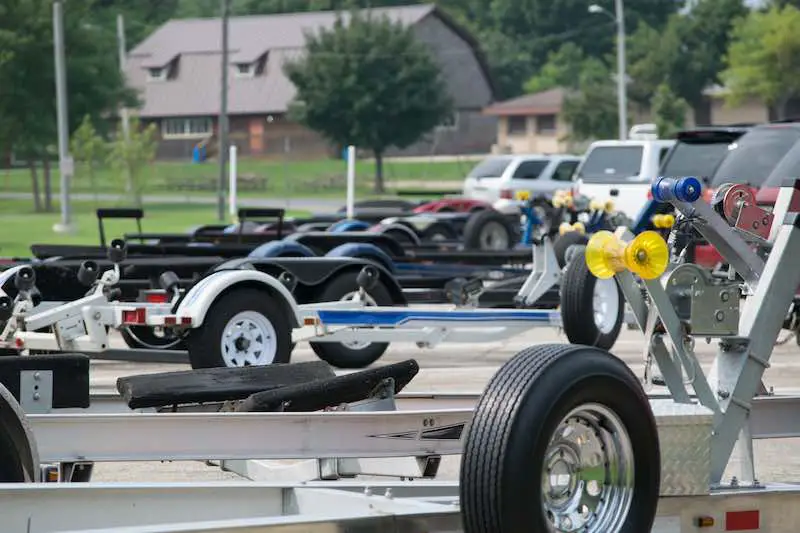
An axle on a boat trailer is the device that is used to attach the trailer tires to the suspension system. The majority of trailers are single axles.
If the trailer is a tandem axle, it will have two axles on which four wheels can be mounted.
Whether it is a single or tandem axle trailer, most manufacturers will drill a series of holes
into the bottom of the axle to allow water to enter and eliminate buoyancy.
The Suspension
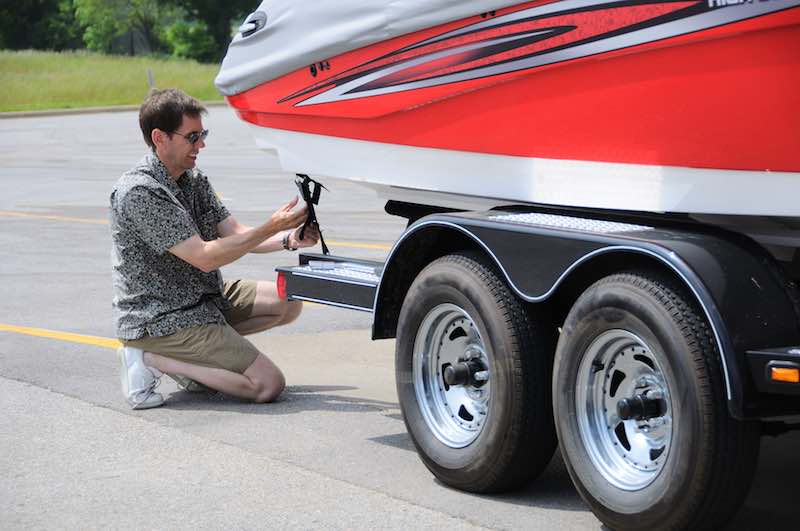
There are two types of suspension methods, leaf spring and torsion beam, by which the wheels are linked to the trailer frame.
Most commonly used, leaf springs are a series of thin, curved steel plates on top of one another, and they flex to absorb shock.
Torsion beam suspension will use a torsion bar as a weight-bearing spring. The shock absorption is provided by the bar’s torsion resistance, which is generally rubber cords that are inside the axle housing.
The Hub Bearing
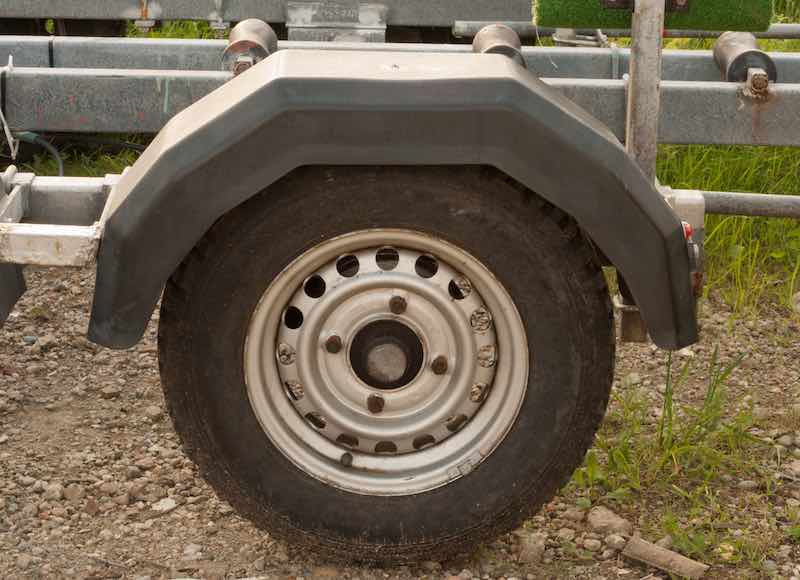
These bearings are inside the wheel hub, which is packed with grease for the protection of the bearings.
Without the grease, friction and the build of heat will ruin the bearings, and they will cease to turn.
There is also an alternative system to grease, and that is oil bath lubrication. A reservoir of oil continually coasts the bearings as they rotate.
The most common of the two methods of lubrication are the grease-filled hubs.
That is because of the viscosity of grease; it will stay where you put it. A grease-filled hub will not have room for air or water.
The disadvantage, in the past, is that you were not able to visually examine the bearings without disassembly.
On the market today is the Bearing Buddy that allows visual inspection of grease level.
While it is a great advantage to inspect the bearings visually, it is still recommended to replace the grease every 3,000 to 4,000 miles or on an annual basis, whichever the case may be.
This will be a process of removing, repacking, and reassembling each wheel on the trailer.
Oil-filled hubs are used on trailers that are towed long distances. These hubs offer less resistance, which gives higher efficiency when towing.
The most significant advantage of oil-filled hubs is that they can go up to 40,000 miles between oil changes.
The disadvantage is that the clear plastic cover on the end of the hubs allow you to see the oil level, but are also their weak spot.
If the cover becomes cracked, and you are literally dead in the water.
If you have an oil-filled hub but do not use your boat trailer frequently, you will need to spin the trailer tires manually every few weeks.
The oil hubs are half full of oil, and so the bearings that are above the oil line can corrode if not coated with oil.
The video below will give you a great walkthrough of how to change or add grease to hubs that are grease filled.
How to Change Boat Trailer Bearings
If you need to change out the hub on a trailer, these rebuilding kits we previously wrote about will get you started: 5 Best Trailer Hub Kits 2019 [Rebuilding Boat Trailer Hub Assemblies]
The Bunks vs. Rollers
You have two options for the support of the hull of the boat while it is on the trailer. Those are either a bunk or rollers.
The part of the boat trailer that supports the hull of the boat in transit is called the bunk.
Usually made from wood and covered in marine-grade carpet, the bunk supplies the primary support for the boat.
Rollers play the same role, but as the name suggests are rollers rather than a flat surface.
Rollers can make it easier to slide the hull on and off the trailer. If you have a heavy boat or launch at ramps that have very slight inclines, rollers make the job much easier.
However, that same ease of movement can cause your boat to roll freely off of the trailer when you don’t want it moving.
Bunks serve the purpose better when you are in steep boat launches.
They will often help you steer your boat onto your trailer better than rollers.
While bunks do not provide the same ease as rollers, they can be sprayed with Liquid Rollers or by adding “slick strips” to the bunks, which makes the boat slide more easily.
Another consideration is that boats that sit for long periods can deform where the weight of the boat rests.
These small deformities are not an issue getting the boat on and off a roller trailer, but the problem does happen more on a roller trailer than a bunk trailer. (bunks tend to spread the weight load)
Lastly, rollers require lubrication and can break. They are also more expensive than bunks.
Bunks require less care, and the carpet on bunks will only need to be replaced every five or six years.
Take how the boat will be used, how often, and launching areas when deciding between bunks and rollers.
How to launch a boat alone
The Brakes
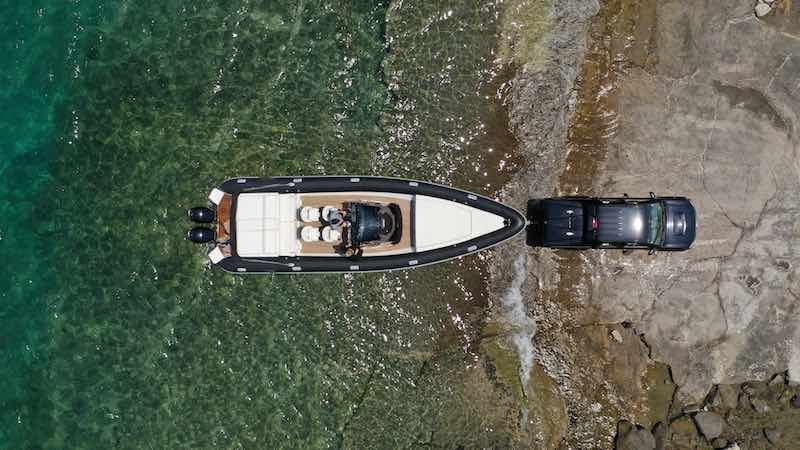
Check the laws in your state, but typically brakes are mandatory for all wheels on any trailer more than 3000 pounds.
The most common boat trailer option for brakes are hydraulic surge brakes. They are more tolerant of water than electric alternatives.
The brakes are activated by momentum change during deceleration. They can be used with either drum or disc style brakes.
Drum brakes have more parts, a bit more difficult to service but are less expensive. They work by forcing a pair of brake shoes against the side of an enclosed drum.
It is recommended that drum brakes not be used if the gross vehicle weight is over 3000 pounds. Their most significant disadvantage is that they will hold water can corrode faster.
If your trailer has drum brakes, they should have a hose connection that allows you to flush the brakes internally with fresh water.
The flush kit reduces the rust and corrosion issue.
Disc brakes are less complicated than drum brakes but are more expensive. They use hydraulic pressure to force brake pads to squeeze against a rotor.
They are easier to rinse off at the end of the journey and don’t rust and corrode like drum brakes.
The Winch
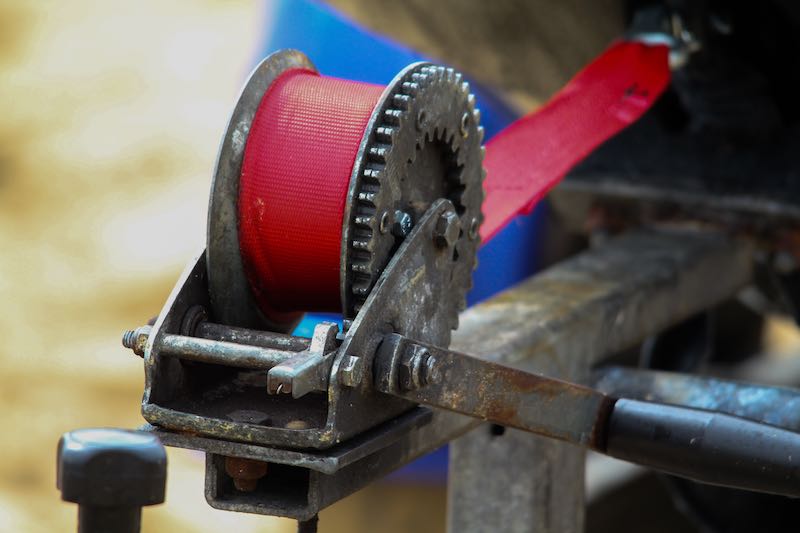
As an essential item on a boat trailer, the winch pulls the boat up onto the trailer. It is also used as a tie-down point once the boat is situated on the trailer.
The winch is located at the front of the trailer, closest to the towing vehicle. This device consists of a pulley wheel around which a rope or cable is wrapped.
Although electrical winches are available, you will find that most of them are mechanical, with a handle that is cranked.
A horizontal-axle rotating machine called a windlass keeps the tension, while a ratchet lock prevents against slippage.
The crank pulls the line (connected to the boat) in, to be stored on the drum of the winch. The gearbox has three main speeds.
· A 1:1 ratio for winding up the line once the boat was launched.
· A 3:1 ratio for pulling light boats onto trailers
· A 5:1 ratio for hauling a heavy boat out of the water
The electric winch requires little muscle power when compared to the mechanical one. The winch is connected to a 12-volt battery and uses variable speed gear ratios.
Electric winches can “power in” and “freewheel out.” Power in is as it sounds; it is pulling the boat onto the trailer.
Freewheel (or float) means that you use gravity to float the boat into the water.
Probably one of the parts on your boat trailer that works the hardest, the winch is relatively easy to maintain.
As with most any devices, if your boat primarily in saltwater, you will need to pay more attention to your winch than you would have to if your boat only in freshwater. Hose down your winch with fresh water after each trip out.
If your winch has a strap, rather than a wire rope, don’t let the strap sit wet on the winch for days.
Pull the strap all the way out and let it dry; this will keep it from deteriorating.
While the strap is out, check for any signs of fraying. If you notice signs of wear, replace it right away.
Pay attention to the winch gears, the shaft and bushes by using marine grease to lubricate them. This will help to prevent corrosion. If using a wire rope, lubricate the strands so that they will slide easier.
Here is a review of both manual and electric boat winches: Best Boat Trailer Winch 2021 [Manual and 12V Electric Winches]
The Safety Cable
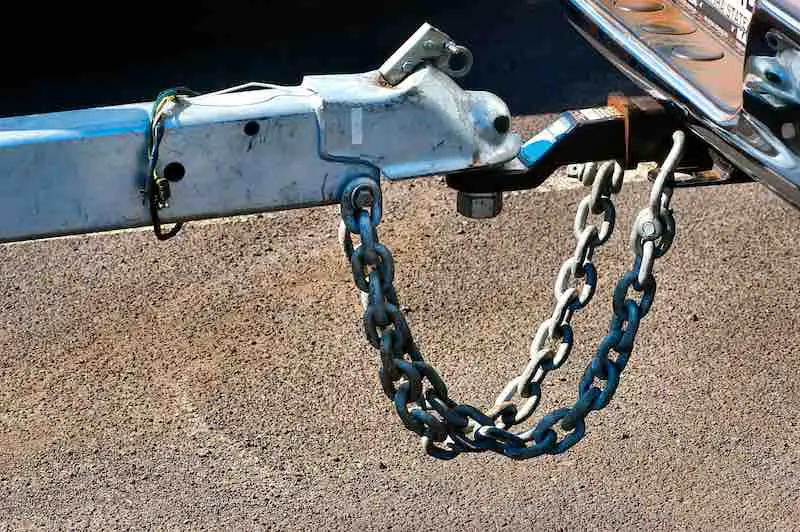
As the name implies, a chain or cable is run from the boat trailer tongue to the towing vehicle. This is done in case your trailer comes off of the tow ball on the vehicle.
Crisscross the chain or cable under the coupler. Make sure that it is short enough that it will catch the tongue before it hits the pavement. Secure it with a heavy-duty S hook to cable attachments on the vehicle.
The Tongue Jack
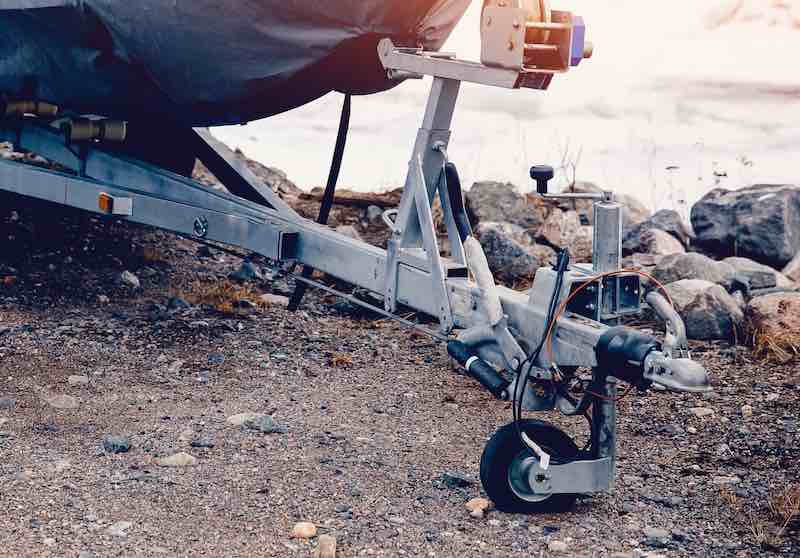
The tongue jack – or trailer jack – features a wheel at the base, which allows the boat trailer to be moved about to position it over the hitch ball.
The tongue weight is an important consideration. The weight is defined as the downward weight that the trailer and its contents placed on the ball hitch.
The rule of thumb is that the tongue weight should not exceed 10% of the gross trailer weight. (the weight of the trailer itself with the fully loaded boat in place)
If there is too much tongue weight, the towing vehicle will not handle well, and the rear tires will suffer excessive wear.
If there is too little tongue weight, the trailer will sway from side to side, or it will rush forward and backward.
How do you determine the tongue weight?
There are three ways to do so:
1. Believe it or not, you can use a bathroom scale. Use a cinder block to place the scale on, and place the coupler of the loaded trailer on the scale. Make sure it is at a standard towing height.
2. There are several tongue weight scales on the market that can run from one hundred to several hundred dollars and will accurately measure tongue weight.
3. Take your fully loaded trailer to a scale at a truck stop. You may be charged a small fee.
Drive onto the scale with all four wheels of the towing vehicle and record the weight of the vehicle with the trailer attached.
Next, unhook the trailer and jack up the trailer tongue so that there is no weight on the hitch ball, making sure that the trailer jack is not on the scale.
Subtract your vehicle weight from the weight of the towing vehicle with the trailer attached. This will give you the tongue weight of your trailer.
It is crucial to get the right tongue jack for your trailer. This article will help you make a decision: Best Boat Trailer Jack 2021 [Heavy Duty Tongue Jacks]
Last But Not Least
If the boat trailer does not already have one, invest in a spare tire carrier for the trailer. A flat tire can happen a mile from home or 50 miles from home.
Having a carrier on the trailer itself frees up space in the towing vehicle. The tire will also be more accessible if it is needed. A carrier can cost as little as $20 or as much as $100.
This article will give you some suggestions about trailer tires: Best Boat Trailer Tires 2019 | Rim & Tire Combo Reviews
The Cost
Now that we know what to look for in a boat trailer, what should they cost?
In general, trailers are used to carry boats that are 14’ to 25 ‘ long. If you are purchasing the boat from a dealer, the trailer may be part of the package.
The least expensive boat trailers are the ones with a single axle. They are easy to maneuver by hand and have a tight turning radius but tend to sway when being towed.
Tandem (dual axle) trailers are more expensive but can pull heavier loads and have a smoother
ride with less sway. They also have better traction on uneven surfaces.
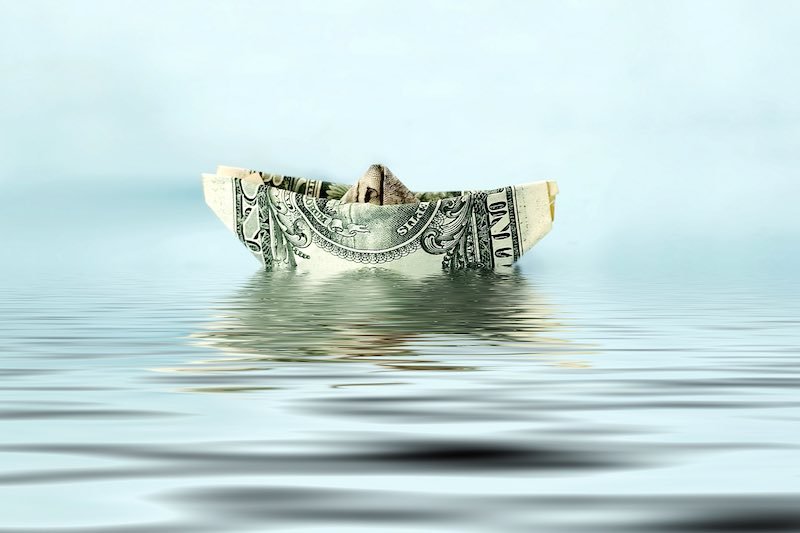
The Boat U.S. Foundation also has some tips on purchasing a boat trailer. Read that here: Boat Transportation & Trailering.
For an economy, a single-axle trailer about 14′ long, it can cost between $800 and $1,200. The prices will vary and depend on the material (aluminum, galvanized, or steel).
The same single-axle trailer can cost $800 to $3,000 when it is 15’ to 20’ long. Again, the materials that the trailer is made of will impact the cost.
A tandem axle trailer can cost from $1,800 to $5,000 or more for an 18′ to 25′ model. These trailers are used with heavier fishing boats, power or sailboats.
Tri-axle trailers start to run between $5,000 and $7,000 for the same 18′ to 25′ lengths.
Typically, a new trailer will depreciate anywhere from 15% – 20% once they leave a dealer lot, much like an automobile. After that, they will depreciate about 10% a year.
Looking for a used trailer is a viable option. While a new trailer might depreciate fast, that does not mean its functionality is diminished.
There is always the option of renting a boat trailer. It might not be the ideal solution, but it is available.
Looking online would be the place to start, and if you have a local marina or boat dealer, they would also be resources for information.
If possible, check the reputation and safety practices of the business you are considering renting from to ensure that you will be getting a sound trailer.
Looking online, we found a wide range of prices from a low of $75 a day for a pontoon trailer up to $375 a day for a trailer that would hold up to 6,000 pounds.
The Title and Registration
Most states require that you have 30 days from purchase to title and register your boat trailer. As laws may vary, be sure to check with the Department of Motor Vehicles in your state.
While not all states require titles and registrations for boats, if you are in a state that does require it, a penalty can be assessed for non-compliance.
Typically, a trailer is any unit that carries property or passengers. Examples of trailers are:
- Flatbeds
- Semi-trailers
- Boat trailers
- Farm wagons
- Campers
When applying for a title and registration, your local DMV will ask for all or some of the following:
- A signed title. Other proofs of ownership would be a bill of sale or a Manufacturer’s Statement of Origin (MSO)
- A signed application for title and license
- Proof of trailer insurance
- Fees for title and registration
The Payoff
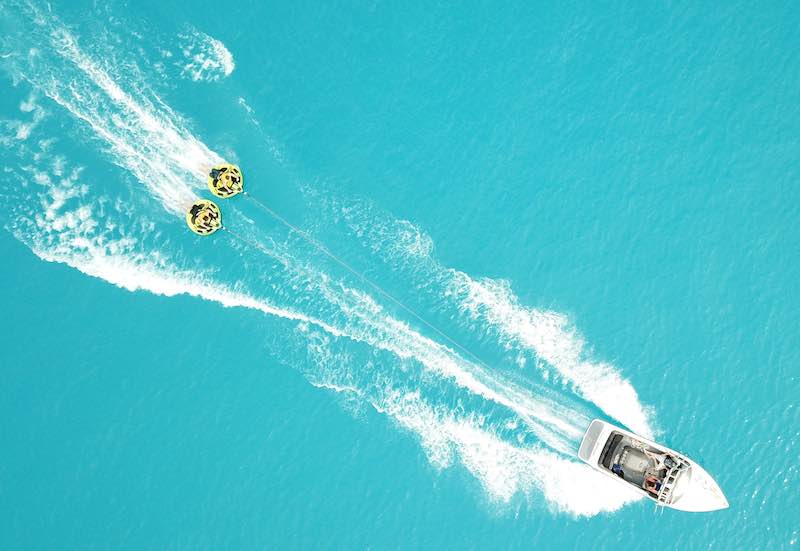
While it may seem like there is a lot to a boat trailer, it is just a learning curve. Once you become familiar with the components and parts, it will become second nature.
The payoff is that you will be able to transport yourself, quite literally, to adventures on the water. One last video will show you how to launch your boat alone. Enjoy!
